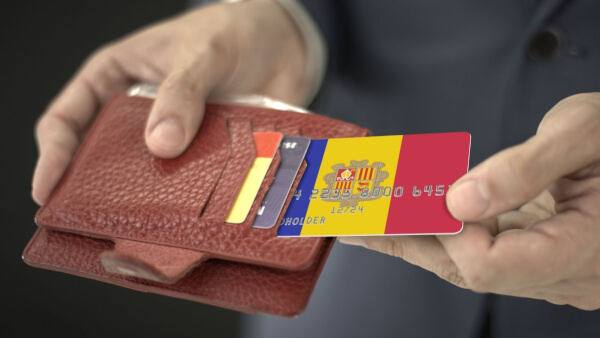How to open a UK bank account online in 2025
Check out our essential guide on how to open a bank account online, including bank types, required documents, fees, and more.

If you’re planning to spend time abroad, whether you’re working, studying or perhaps considering a permanent move, you might be interested in getting an international bank account.
But what is an international account exactly, and how does it work? In this handy guide, we’ll cover everything you need to know about international banking, including which UK banks offer this kind of account. And of course, the kinds of fees that international accounts come with.
Also, check out an alternative, cost-effective way to manage your money across borders – the Wise account from the money services provider Wise. It’s not a bank account but offers many similar features.
With the Wise account, you can spend, hold and convert money in 40+ currencies and send secure international transfers to 140+ countries for low fees* and the mid-market exchange rate. Your money is always safeguarded and you’ll also get dedicated support when sending large amount transfers.
Learn more about the Wise account 💰
The term international banking generally refers to financial services conducted across international borders.
For personal banking customers, it usually means the ability to have accounts in different currencies. This can be useful if you regularly spend time in another country, or have moved there permanently - but still want ties to a bank you’re familiar with.
Banks which offer international banking usually operate on a global scale, serving customers in lots of different countries outside the destination where they hold headquarters.
International banking for businesses generally involves a much wider range of financial services. It can include everything needed to conduct cross-border trade, including deposits, bulk remittances and global payments.
And international banking doesn’t just mean current accounts either. Globally operating banks also offer savings and investment products, loans and other services to customers around the world.
So what is an international account, and what can you do with one? It’s a specialised type of current account, usually offered global divisions of major banks.
This type of account is often available in multiple currencies, with the main ones being GBP, EUR and USD. You’ll find though that some banks will require you to choose one currency, and open a separate account if you need banking services in an additional currency.
Many international bank accounts come with a debit card too, so you can spend in the currency of your choice.
Unlike with UK current accounts, which require you to be a tax-paying UK resident to open one, international accounts don’t always have location-based eligibility requirements. You’ll just need to be resident in a country that the bank covers.
However, you might find that different eligibility conditions will apply. For example, you might need to meet a minimum income or savings requirement to open the account, or be an existing customer and already have one of the bank’s UK current accounts.
While it varies between banks, international accounts can offer the following features and benefits:
One of the main benefits of opening an international account is to avoid unnecessary currency conversion - and the costs that come with it.
So if you’re a UK citizen living in the US, an international account lets you make and receive US dollar payments without the need to convert currency from GBP.
They’re useful for people with family in other countries, who regularly spend time outside of the UK on visits. You can also use this kind of account as a freelancer with clients all over the world, or if you’re a digital nomad living and working abroad as you travel through countries.
If you decide to move abroad and can’t keep your UK account, an international account could be useful - unless you decide to open a local bank account in your new country instead.
Most of the biggest high street banks in the UK offer international accounts of some kind. Here’s what’s on offer from HSBC, Barclays, Lloyds Bank, Santander and NatWest.
HSBC, one of the world’s biggest global banks, has a Global Money Account available on its UK website.
It’s a multi-currency rather than a single currency account, which lets you hold money in 18 major currencies at once for no monthly fee. You can send money in 50+ currencies to 200+ countries for no HSBC fees.
The app-only account also offers competitive live exchange rates and a multi-currency debit card. This offers fee-free spending and withdrawals at HSBC ATMs (although other non-HSBC charges may apply). It’s only available to customers who have an active HSBC UK current account.
UK banking stalwart Barclays has an International Bank Account, although it's only available to applicants with a certain amount of savings. You’ll need to have at least £100,000 in savings and/or investments to apply. Plus, you’ll need to be resident in one of the 70 countries where the account is available.
There’s no monthly fee, unless your balance dips below a certain amount.
If you can meet the requirements, you can open the account in either USD, GBP or EUR. Your money will be held by the international division of Barclays in the Isle of Man. You’ll get a debit card, but this will be in GBP only. You can also use the account to make secure international payments in 60 currencies to 90 countries.
The Lloyds Bank International Current Account comes in a choice of three currencies - USD, GBP or EUR. You can only open it in one currency, so if you need another, you’ll have to open a separate account.
The account has a monthly fee, but in return you’ll get international payments with no Lloyds fee. However, correspondent and receiving bank fees may still apply. The account also comes with a debit card in all three available currencies, and 24/7 online banking.
To be eligible to open the account, you’ll need to have a gross annual income of at least £50,000 (or £25,000 in savings with Lloyds).
Spanish-owned global bank Santander is a major player when it comes to UK current accounts, but it also has an international account available. It’s called the Gold Account, available in either GBP, USD or EUR.
The account, managed by Santander International, comes with a debit card in all three currencies, as well as online, mobile and telephone banking. It also offers variable rate interest on your account, paid quarterly. There’s no monthly fee to worry about, but there are fees for international transfers.
There is a catch though - international customers will need to deposit and hold at least £75,000 or the currency equivalent to be eligible to open an account.
| 📚 Read more: Sending a large payment with Santander UK |
|---|
Lastly, there’s NatWest International and its International Select Account. With funds held in Jersey, the account offers international transfers and a debit card. It also lets you manage your money in multiple currencies, but only if you open a Cash Management account too.
The International Select Account has a monthly fee, and can only be opened by applicants with a minimum salary of £40,000 or an opening deposit of £25,000.
Read more about opening an account with NatWest here.

International accounts tend to come with more fees and charges than ordinary current accounts, partly because they’re seen as a more exclusive product. We’ll run through the kinds of fees you might encounter below.
Many (but not all) international bank accounts have monthly fees, which tend to be around £7.50³ to £8⁵ a month.
Despite being international accounts, some charge fees for cross-border transfers. Others charge a monthly fee instead, and offer fee-free global transfers. You’ll just need to watch out for additional fees charged by correspondent/intermediary and recipient banks when money is sent using SWIFT.
It’s also a good idea to check the exchange rates on offer when currency conversion is required and how much they differ from the mid-market exchange rate.
Most international accounts come with a free debit card as standard, and may even offer fee-free withdrawals overseas. However, this only applies when you use the bank’s ATMs, so you’ll need to check if they operate any in your destination. If not, you may have to pay ATM withdrawal fees to use cash machines owned by other banks.
International bank accounts which come with a debit card don’t tend to charge foreign transaction fees for spending or withdrawing cash overseas. But it’s always wise to check the fees list just in case.
Love the thought of low fees, great exchange rates and an easy way to send money worldwide? Open a Wise account online and you can start managing your money in 40+ currencies. It’s not a bank account but offers many similar features.
With Wise, you can send international payments worldwide to 140+ countries for low fees* and mid-market exchange rates. All transfers are secure and trackable, and when you’re sending large amounts you’ll also get dedicated support.
There’s even a Wise card you can get for a one-time cost of £7 for spending in 150+ countries. This clever card automatically converts your pounds to the local currency at a great rate, only adding a tiny, transparent conversion fee – or it’s free if you already have the currency in your Wise account.
After reading this, you should have a better idea of what an international bank account is, and which UK banks offer them. Just make sure to check the eligibility requirements and fees before applying.
Sources used:
Sources last checked on date: 06-Jun-2024
*Please see terms of use and product availability for your region or visit Wise fees and pricing for the most up to date pricing and fee information.
This publication is provided for general information purposes and does not constitute legal, tax or other professional advice from Wise Payments Limited or its subsidiaries and its affiliates, and it is not intended as a substitute for obtaining advice from a financial advisor or any other professional.
We make no representations, warranties or guarantees, whether expressed or implied, that the content in the publication is accurate, complete or up to date.

Check out our essential guide on how to open a bank account online, including bank types, required documents, fees, and more.

Check out our essential guide on how to open a bank account in Jersey as a British expat, including documents, fees, banks and much more.

Check out our essential guide on how to open a bank account in Monaco as a British expat, including documents, fees, banks and much more.

Check out our essential guide on how to open a bank account in Andorra as a British expat, including documents, fees, banks and much more.

Read our rundown of the best Nationwide USD account alternatives available in the UK, including HSBC, Lloyds, Wise, Barclays, Revolut and more.

Read our essential guide to the Revolut USD Account, including info on features, fees, rates, limits and how to apply.